Climate change: The 'insane' plan to save the Arctic's sea-ice
- Published
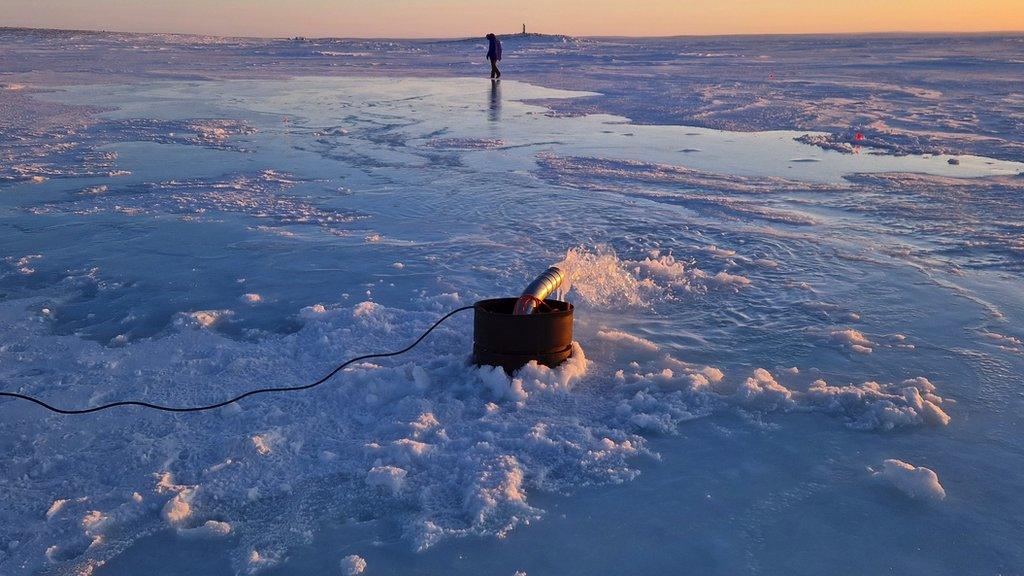
Saving the ice - a daring experiment or a dangerous distraction?
Perched on sea-ice off Canada's northern coast, parka-clad scientists watch saltwater pump out over the frozen ocean.
Their goal? To slow global warming.
As sea-ice vanishes, the dark ocean surface can absorb more of the Sun's energy, which accelerates warming. So the researchers want to thicken it to stop it melting away.
Welcome to the wackier side of geoengineering - deliberately intervening in the Earth's climate system to try to counteract the damage we have done to it.
Geoengineering includes more established efforts to lock up planet-warming gases, such as planting more trees and burying carbon underground.
But more experimental measures aim to go a step further, seeking to reduce the energy absorbed by the Earth.
Many scientists are strongly opposed, warning that such attempts distract from the critical step of cutting carbon emissions and risk doing more harm than good.
But a small number of advocates claim their approaches could give the planet a helping hand while humanity cleans up its act.
The ultimate goal of the Arctic experiment is to thicken enough sea-ice to slow or even reverse the melting already seen, says Dr Shaun Fitzgerald, whose team at the University of Cambridge's Centre for Climate Repair is behind the project.
Will it work or is it, as one scientist put it, "quite insane"?
"We don't actually know enough to determine whether this is a good idea or bad idea," admits Dr Fitzgerald.
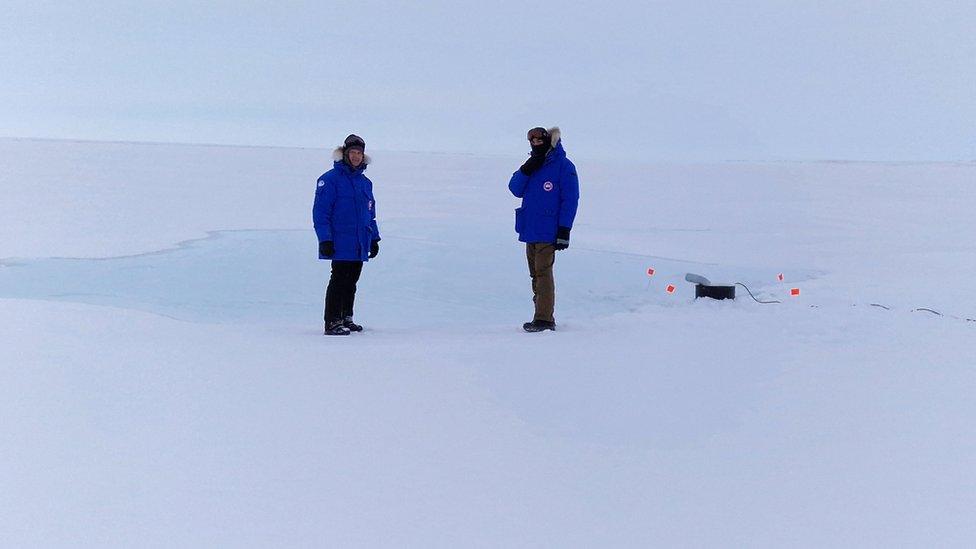
"It's quite cold," the researchers say. Wind chill in Cambridge Bay can make it feel like -45C
The researchers have been braving bitter conditions in Cambridge Bay, a tiny Canadian village in the Arctic Circle.
"It's quite cold," Andrea Ceccolini of Real Ice, a British company leading the trip, tells me via a patchy Zoom connection from inside a flapping white tent.
"It's about -30C with a strong wind, which brings the temperature to -45C with wind chill factor."
They are drilling a hole in the sea-ice that naturally forms in winter, and pumping around 1,000 litres of seawater per minute across the surface.
Exposed to the cold winter air, this seawater quickly freezes, helping to thicken the ice on top. The water also compacts the snow. As fresh snow acts as a good insulating layer, now ice can also form more easily on the underside in contact with the ocean.
"The idea is that the thicker the ice [at the end of winter], the longer it will survive when we go into the melt season," Mr Ceccolini explains.
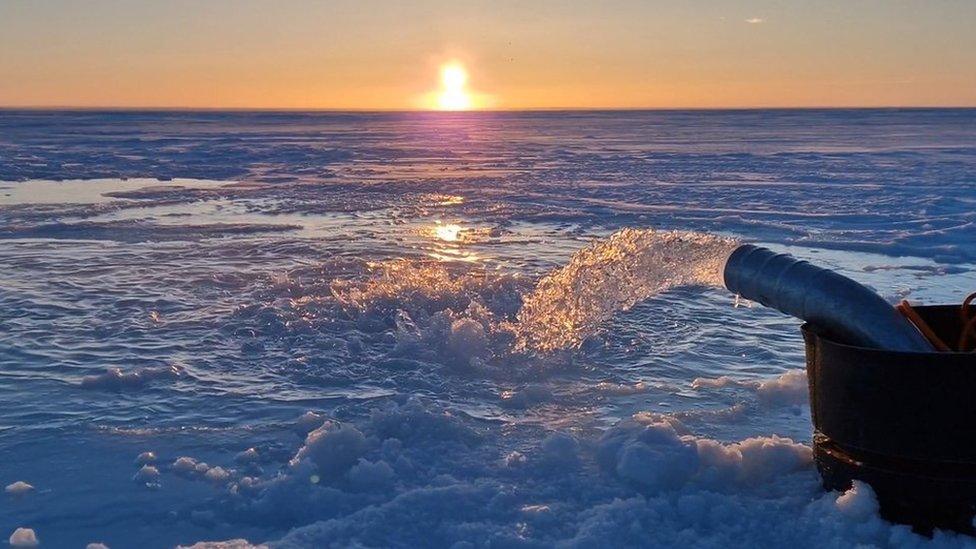
A pump is used to flood the sea-ice surface with seawater, which will then freeze
Speaking to me towards the end of their trip, they've already seen the ice thicken by a few tens of centimetres across their small study area. The ice will be monitored by locals in the months ahead.
But it's still far too early to say whether their approach can actually make a difference to the rapid decline in Arctic sea-ice.
"The vast majority of polar scientists think this is never going to work out," cautions Martin Siegert, an experienced glaciologist at the University of Exeter, who is not involved in the project.
One issue is that the saltier ice may melt more quickly in the summer.
And then there's the huge logistical challenge of scaling the project up to a meaningful level - one estimate suggests that you could need about 10 million wind-powered pumps to thicken sea-ice across just a tenth of the Arctic.
"It is quite insane in my opinion that this could be done at scale for the entire Arctic Ocean," says Julienne Stroeve, a professor of polar observation and modelling at University College London.
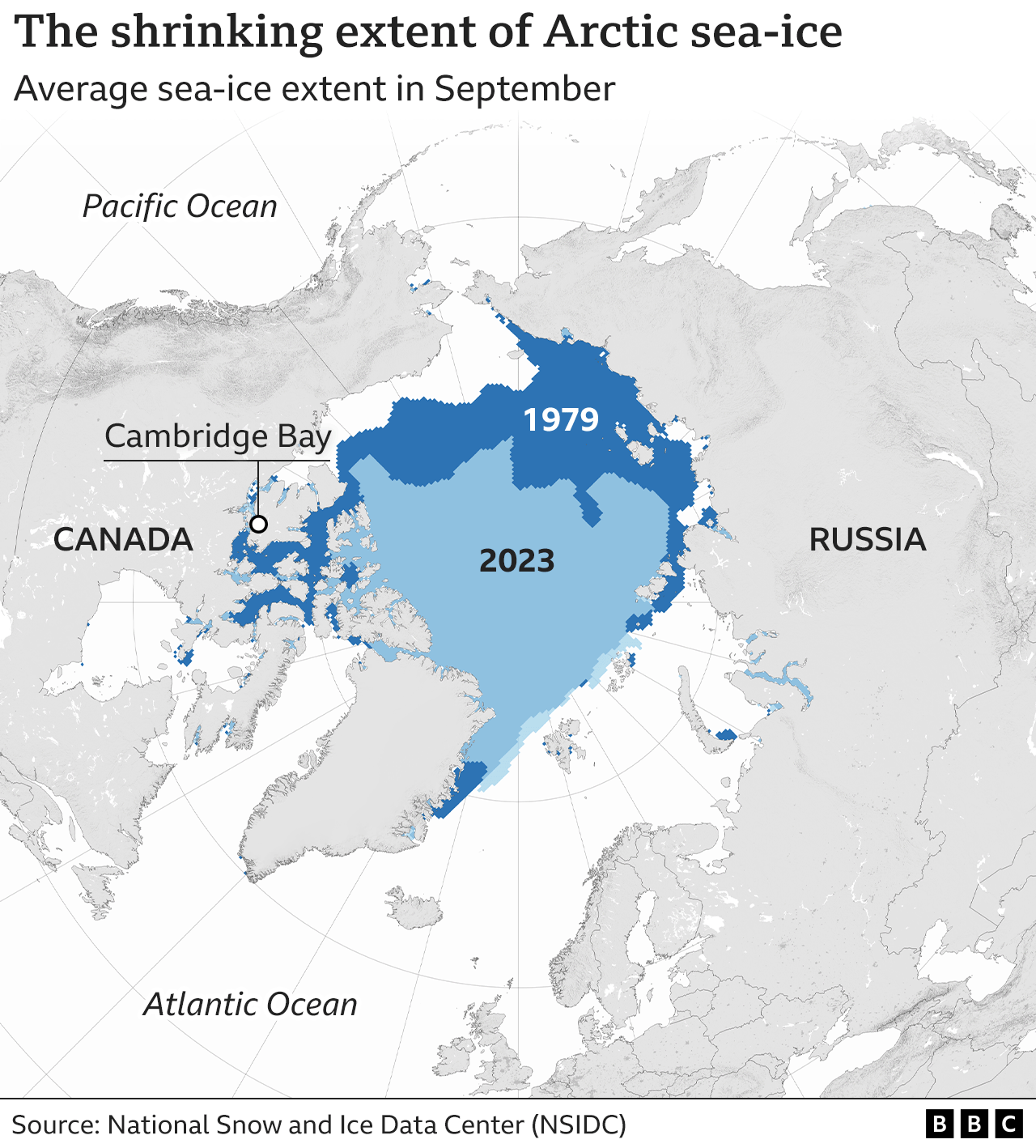
Some of the more experimental geoengineering suggestions include trying to make clouds more reflective by generating extra sea spray, and mimicking volcanic eruptions to reflect more of the Sun's energy back into space.
A number of scientists - including the UN's climate and weather bodies - have warned that these approaches could pose grave risks, including disrupting global weather patterns. Many researchers want to see them banned altogether.
"Geoengineering technologies come with enormous uncertainties and create novel risks for ecosystems and people," explains Lili Fuhr, director of the Fossil Economy Program at the Center for International Environmental Law.
"The Arctic is essential to sustaining our planetary systems: pumping sea water onto sea-ice on a large scale could change ocean chemistry and threatens the fragile web of life."
And there's a more fundamental, widespread concern with these types of projects.
"The real danger is it provides a distraction, and people with vested interests will use it as an excuse to keep burning fossil fuels," Prof Siegert warns.
"Frankly, it's insane and needs to be stopped. The way to solve this crisis is to decarbonise: it's our best and only way forward."
The Arctic researchers are acutely aware of these concerns. They stress that they are simply testing the technology, and wouldn't unleash it more widely until the risks are better known.
"We're not here promoting this as the solution to climate change in the Arctic," Dr Fitzgerald stresses.
"We're saying that it could be [part of it], but we've got to go and find out a lot more before society can then decide whether it's a sensible thing or not."
They agree that geoengineering is no silver bullet to tackling climate change, and that steep cuts to fossil fuels and carbon emissions are most important to avoid the worst consequences of warming.
But they point out that even with rapid action, the world still faces a difficult future.
The Arctic Ocean is likely to be effectively free of sea-ice by the end of summer at least once by 2050, and possibly even sooner. As the graph below shows, it's already experienced steep declines since the 1980s.
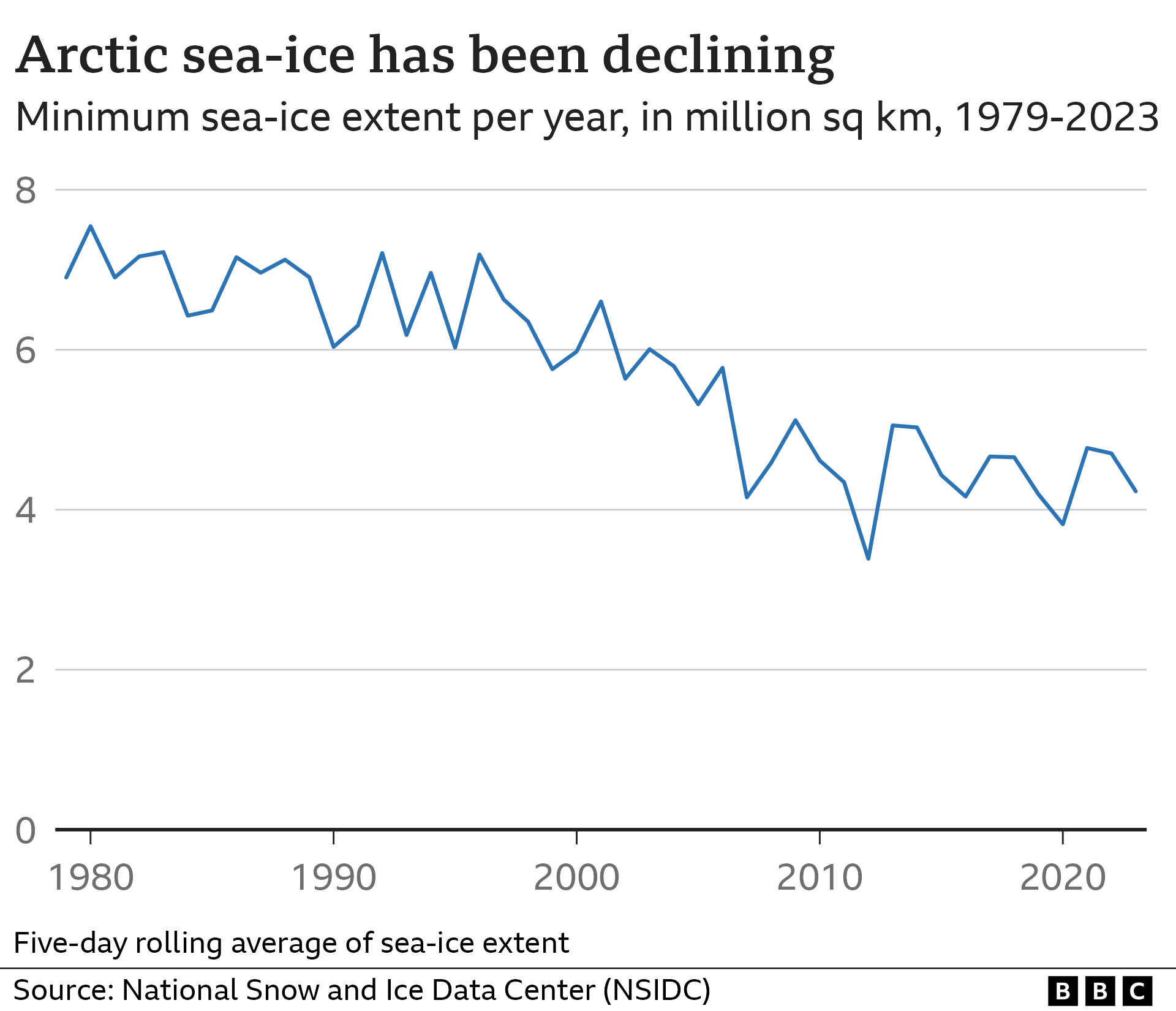
"We need other solutions," argues PhD student Jacob Pantling, a researcher at the Centre for Climate Repair who braved the icy winds in Cambridge Bay.
"We have to reduce emissions, but even if we do them as quickly as possible, the Arctic is still going to melt."
Map by Erwan Rivault
- Published13 February 2024
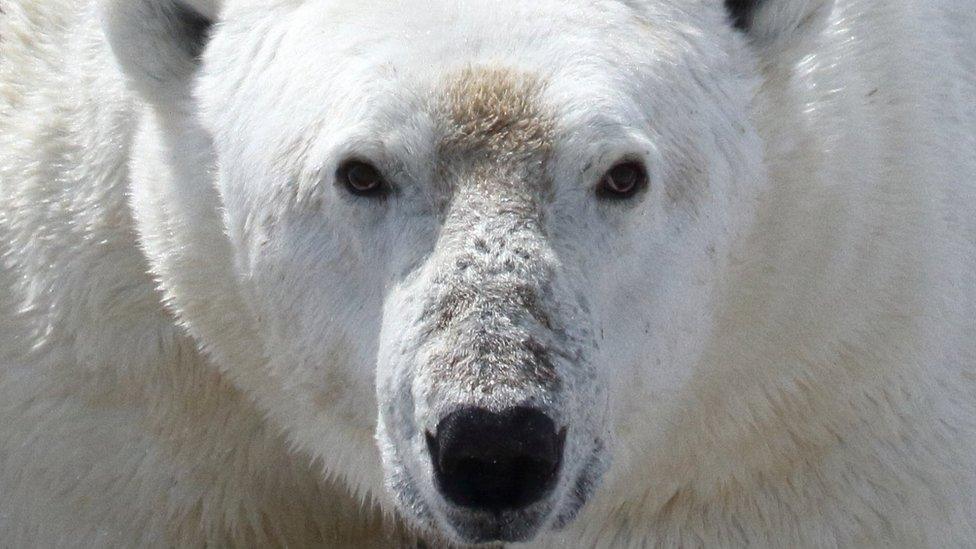
- Published14 December 2022
- Published7 March 2024

